Best spring flowering plants: 25 picks for seasonal blooms
The best spring flowering plants will fill the garden with color and bring your plot to life after the winter months


The garden awakens after winter thanks to the best spring flowering plants coming to life. It’s the season gardeners look forward to the most, and when we eagerly anticipate color from reliable stalwarts such as daffodils, primroses and spring shrubs.
It’s also the best time for planning and planting. The aim should be for something of interest throughout the year. This season, identify where color is lacking and make plans to fill gaps. Thankfully, there is a huge choice of the best spring flowering plants that can be planted any time over the spring season as long as the ground is not frozen.
In a small garden or balcony, everything can be seen at once so it’s important to choose hard-working, long-flowering plants. A pretty alpine, or border of hellebores surrounded by colorful ground cover plants could bring cheer for months. A camellia planted in a pot or border, surrounded by a succession of bulbs will create a fantastic focal point.
So start creating bright and beautiful spring garden ideas with our pick of the best spring flowering plants and you will be itching to get out into the garden.
Pack your pots and beds with spring flowering plants
Spring flowering plants are fairly low-maintenance so they won't add too much work to your spring garden jobs. Everything arrives in sequence and knows what to do at the right moment. The soil remains moist until late spring and so any new trees and shrubs have time to get their roots down and establish before summer.
1. Tulips

Tulips are one of the most versatile of spring flowering plants, and look as good in containers as they do in borders. A pot planted with one type of tulip is more eye-catching than the diluted effect of flowers dotted about the garden.
There are hundreds of different types of tulip, the popular ones that vye for attention include: ‘Estella Rijnveld’ (parrot), ‘Orange Princess’ (late double), and T. viridiflora. Tulips will always fade away after a couple of years so it’s best to plant new ones each fall.
For naturalising in grass, try the small yellow T. praestans ‘Shogun’ or T. clusiana ‘Peppermint Stick’ which are reliably perennial and won't need replacing.
When it comes to how and when to plant tulips, remember that they prefer to be planted in a hot, sunny spot. Their bulbs are planted slightly later than other spring varieties. They should go in the ground in November to help reduce the risk of tulip fire disease. Heights vary between from around 6in (15cm) for dwarf varieties up to 30in (70cm), and are suitable for US zones 3-8.
2. Euphorbia characias (Mediterranean spurge)

All spurges are great feature plants. They are a hugely adaptable low maintenance garden idea, and perfect for filling awkward gaps where nothing else will grow. Mediterranean spurge, E. characias, is a clump-forming shrubby evergreen, with bushy blueish-green leaves and long-lasting bright yellowy green bracts that associate well with bulbs.
There are many varieties and sub species, including, E. characias subsp. wulfenii, E.c. ‘Black Pearl’, with a distinct eye. ‘Tasman Tiger’, with variegated foliage, and ‘Lambrook Gold’ that bears brighter yellow flowers.
Flowered stems will need to be trimmed back to the base in late summer. When doing so be sure to wear gardening gloves as the milky sap is a skin irritant. It makes a useful drought tolerant plant that thrives in poor soil in full sun. It will grow to a height and spread of about 4ft (1.2m). Suitable for US zones 7-9.
3. Iris reticulata (dwarf iris)
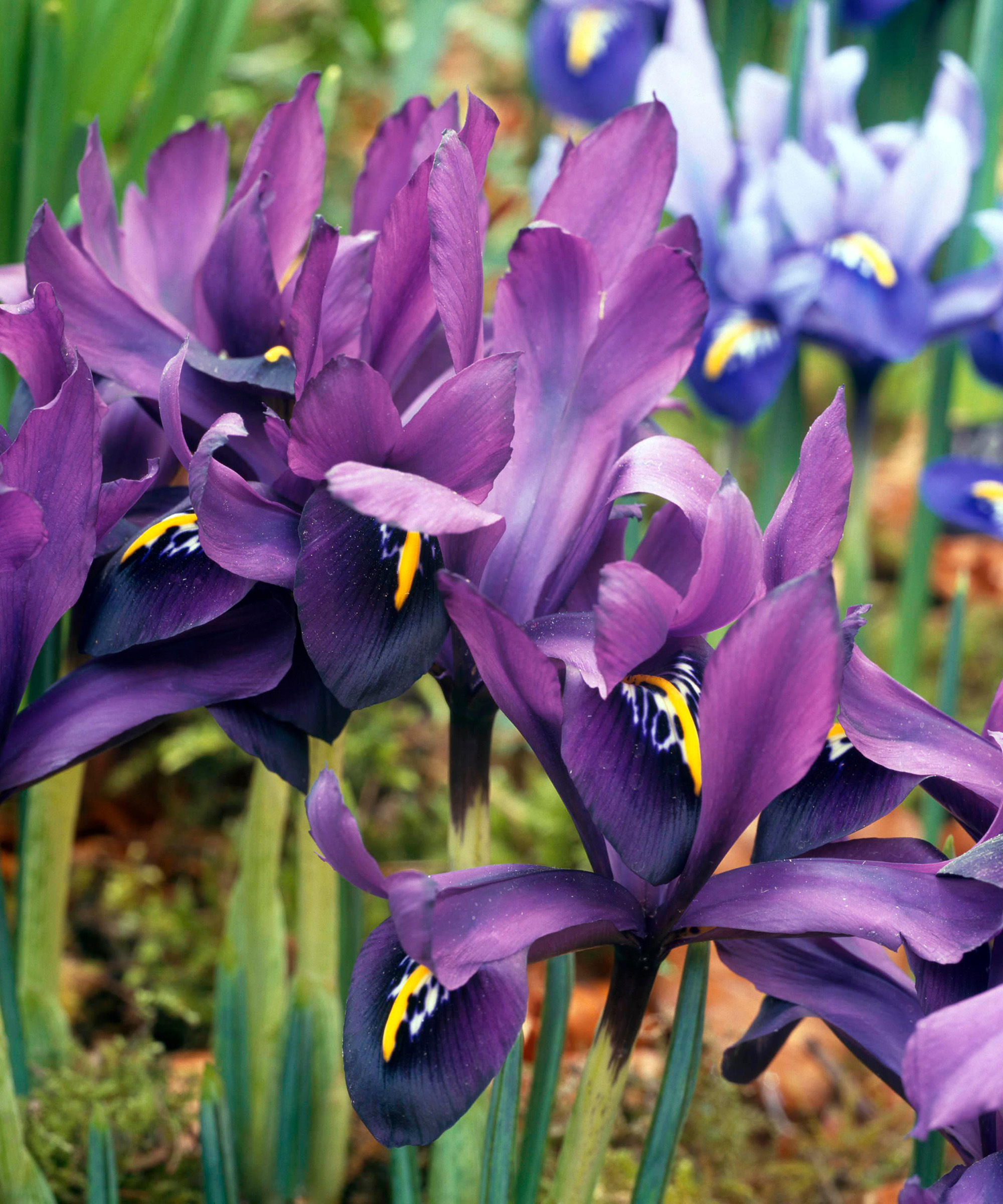
Dwarf irises spring up in late winter and early spring, and bring with them a sweet scent and gorgeous splash of color. They perform superbly well in container gardening ideas when teamed with crocuses.
Popular varieties include ‘Katharine Hodgkin’, with large, pale blue flowers and intricately veined lower petals, which are yellow at the base. ‘George’, which has red-purple petals with a white and red blotch.
Native to the Middle East, the dwarf iris invariably enjoy a sunny spot in a rock garden. And if they're being used in containers they should be kept in sun. They are ideal at the front of border and will grow up to a foot tall.
When planting bulbs for spring they should be planted a foot deep in any well-drained soil in the fall. Narrow leaves appear at flowering time and elongate into summer before the bulbs become dormant. Suitable for US zones 5-8.
4. Viola cornuta (horned pansy)

Much-loved spring flowering plants for borders and pots, viola cornuta are deservedly popular due to their long-flowering ability through the worst of the weather. More floriferous than pansies, these compact plants become smothered in flowers and are easy to look after.
They will respond well to deadheading, which will keep their blooms going even longer. Although treated as annuals, Viola cornuta is a perennial. Once plants become leggy, shear them back to promote new growth and a second flush of blooms.
Violas come in a huge range of colors, including black. Look out for the Sorbet XP varieties, such as ‘Yellow Blue Jump Up’, and ‘Tiger Eye’ which is yellow with black.
Plants can be raised from seed in spring, summer or autumn, or bought as pot plants at any time. Grow them in full sun or partial shade in any free-draining soil. They are prone to slug damage, so follow our tips on how to get rid of slugs to give your plants the best chance of success. Will grow well in US zones 5-9.
5. Dwarf narcissus (daffodils)
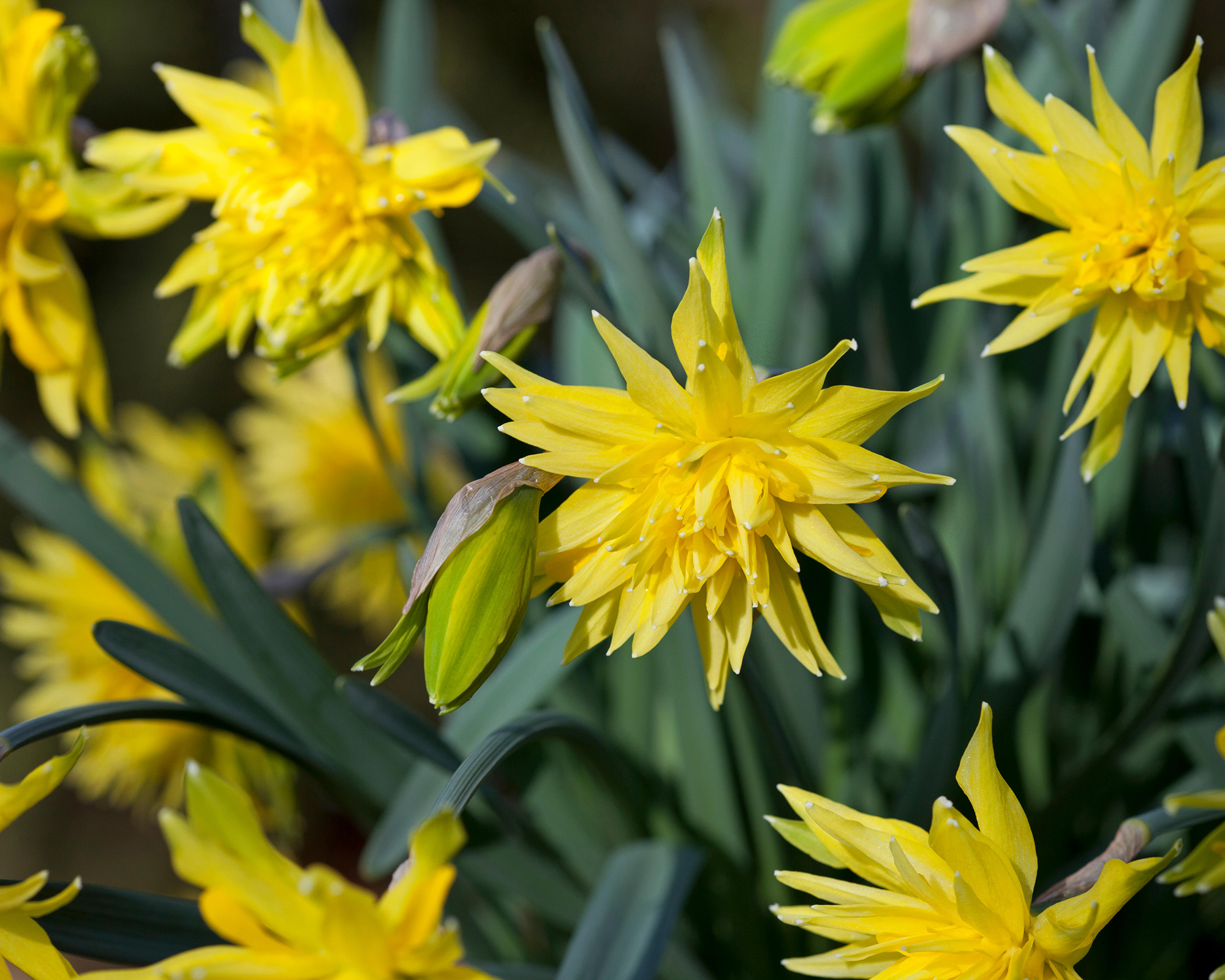
After the dull days of winter, the sight of yellow daffodils will lift our mood without fail. Daffodils are real troopers, continuing to grow and flower through the worst of the weather. Reaching no more than 6in (15cm), they make great partners with other small bulbs such as Scilla siberica and muscari.
They grow well in raised garden beds, window boxes and rock gardens. Or try a slightly different option for planting daffodils by naturalising them in drifts in the lawn or beneath deciduous trees.
Good examples include ‘Rip van Winkle’, bright yellow fluffy double blooms. N. bulbocodium, is a pretty lemon-yellow, N. cyclamineus ‘Jetfire’, has swept back golden miniature petals and orange trumpets. Or go for a double-headed variety like the multi-headed ‘Minnow’ which is yellow-white.
Bulbs are planted in early autumn to three times their own depth, four inches apart, or much closer in container displays. US zones 4-9.
6. Camellia

Good for pots and garden borders, camellias provide a fresh splash of color in spring and lovely glossy foliage for the rest of the year.
There are hundreds of varieties, but think of them as having two main types. Camellia japonica which flowers for 4-6 weeks in spring and comes in a good choice of colors and forms, from white to deep red, in single, double and peony forms.
Then the x williamsii hybrid camellias are more hardy, and tolerant of shade than japonicas and may flower for longer. They mainly come in pink or white, single or double flowering varieties.
All camellias prefer a slightly acidic soil in a sheltered aspect. Plant into well prepared, free-draining soil improved with lots of organic matter.
When thinking about how to grow camellias in pots, use a soil-based peat-free ericaceous compost. Water them well during the summer months when buds are forming. You can keep their size restricted by pruning them in spring. Suitable for US zones 6-9.
7. Pulmonaria (lungwort)

One of the first perennials to flower in spring, the pulmonaria has lovely bright blue, pink and purple tubular flowers from as early as February. Easy to grow, they form a one of the best ground cover plants in shade beneath shrubs and many have striking leaves to boot.
Varieties to look out for include ‘Blue Ensign’ with large blue flowers and plain green leaves, ‘Trevi Fountain’, with pink flowers changing to blue, and ‘Sissinghurst White’, clear white flowers above leaves spotted with silver.
Plant in sun or shade in any well-drained soil type with added organic matter. These easy-going plants simply require deadheading after flowering, trim the leaves and apply a feed and water then new growth will appear. US zones 4-9.
8. Allium
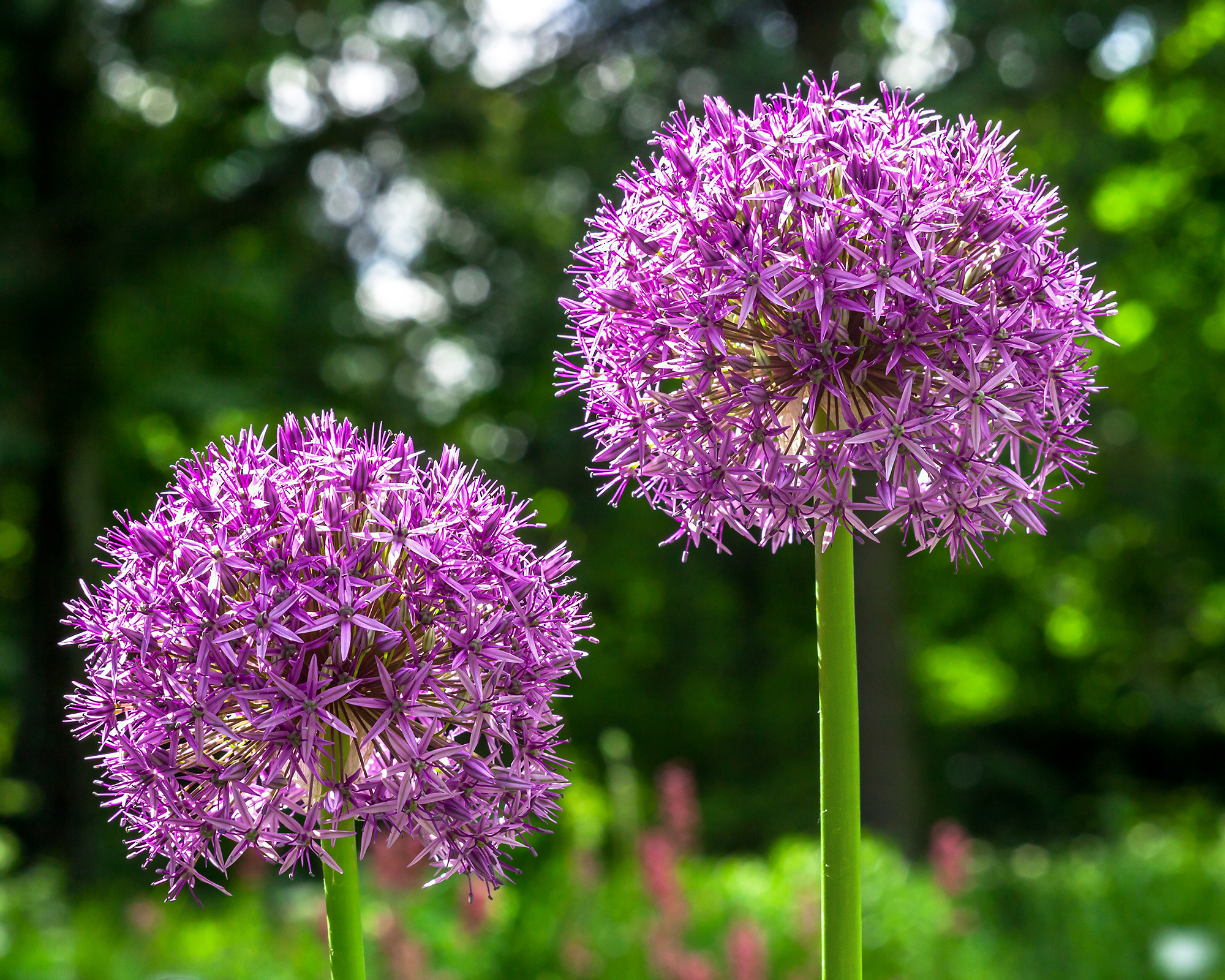
A welcome buzz to the late spring season comes in the form of alliums. ‘Purple Sensation’ creates a spectacle with its spherical blue heads on 3 ft stems, while the cool white heads of ‘Mount Everest’ are most effective when repeated in groups along a border.
For smaller varieties try karataviense, which bears round heads that are packed with star shaped pinkish white flowers on very short stems. These will be perfect for border edging or pots. All alliums are magnets to bees and pollinators.
Our best advice for how to plant allium bulbs is to do it in early fall in free-draining soil. If you garden on heavy soil, add grit to the planting hole. The starry seedheads dry in situ and can be left to add decorative touches to borders or picked for indoor arrangements. Suitable for US zones 4-9.
9. Erysimum (wallflowers)

Wallflowers are one of the top spring flowering plants for adding drama to the garden. Try to keep the color scheme simple and use a single shade to combine with tall tulips otherwise the border becomes too fussy. There’s a huge range of colors to choose from, try ‘Sweet Sorbet’, bi-coloured; ‘Ivory White’, or ‘Sunset Orange’ F1, a vibrant orange. The sweetly scented blooms are great as cutting garden flowers.
Biennial wallflowers are sown in early summer and planted out in fall, some mail order companies offer jumbo plugs at this time. They can also be bought as bare root plants in autumn though the color range is limited. Plant in full sun and after flowering pull up and discard.
Perennial wallflowers such as ‘Bowles’ Mauve’ and ‘Winter Orchid’ flower for a longer period into summer and bees love them. US zone 6-9.
10. Crocus

Learn how to plant crocus bulbs and you will get to enjoy their colorful blooms from late winter. They look great in bare borders where herbaceous perennials are still dormant. Lovely in pots and window boxes, they will also make a real statement when naturalised en masse in lawns. Crocuses are a good source of pollen for early foraging bees.
Your choice is between purples, cream, yellows and white, some have stripes or prominent markings. Try the early flowering C. chrysanthus ‘Creamy Beauty’ which is scented. C. tommasinianus varieties have slender stems and narrow cups. Then comes the larger Dutch hybrids such as ‘Pickwick’, with white stripes and striking orange stigma and stamens.
Plant corms in fall, 3-4 inches deep, in a sunny spot on well-drained soil. If you're planting in lawns, allow the leaves to die down before mowing. US zones 3-8.
11. Prunus (ornamental cherry)
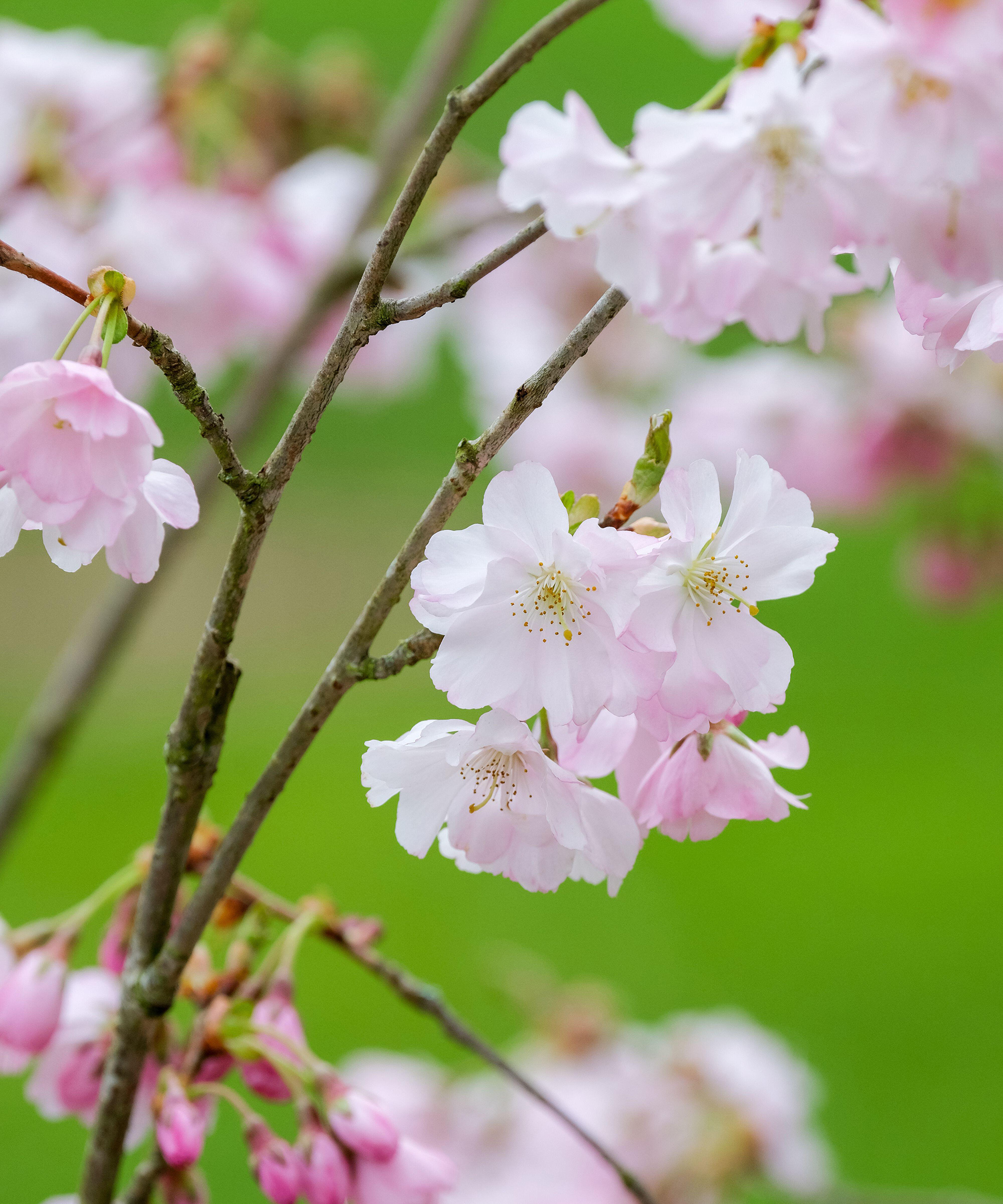
As we come to appreciate the benefits trees offer, gardens of the future are likely to contain far more of them. One of the best flowering trees to cherish is a flowering cherry Prunus pendula f. ascendens ‘Rosea’. Masses of red buds open to shell pink single flowers, a sight to behold when viewed against a clear blue sky.
It has a graceful upright habit, which makes it a good tree for small gardens and if pruning is required, branches can be cut back by a third in summer. Another to try is Prunus ‘Pendula Rubra’ that has a slender weeping habit, the branches become smothered in flowers to create a waterfall of color.
Best planted in full sun and unfussy about soil but avoid waterlogged conditions. Buy as bare roots between November and March. US zones 6-8.
12. Magnolia
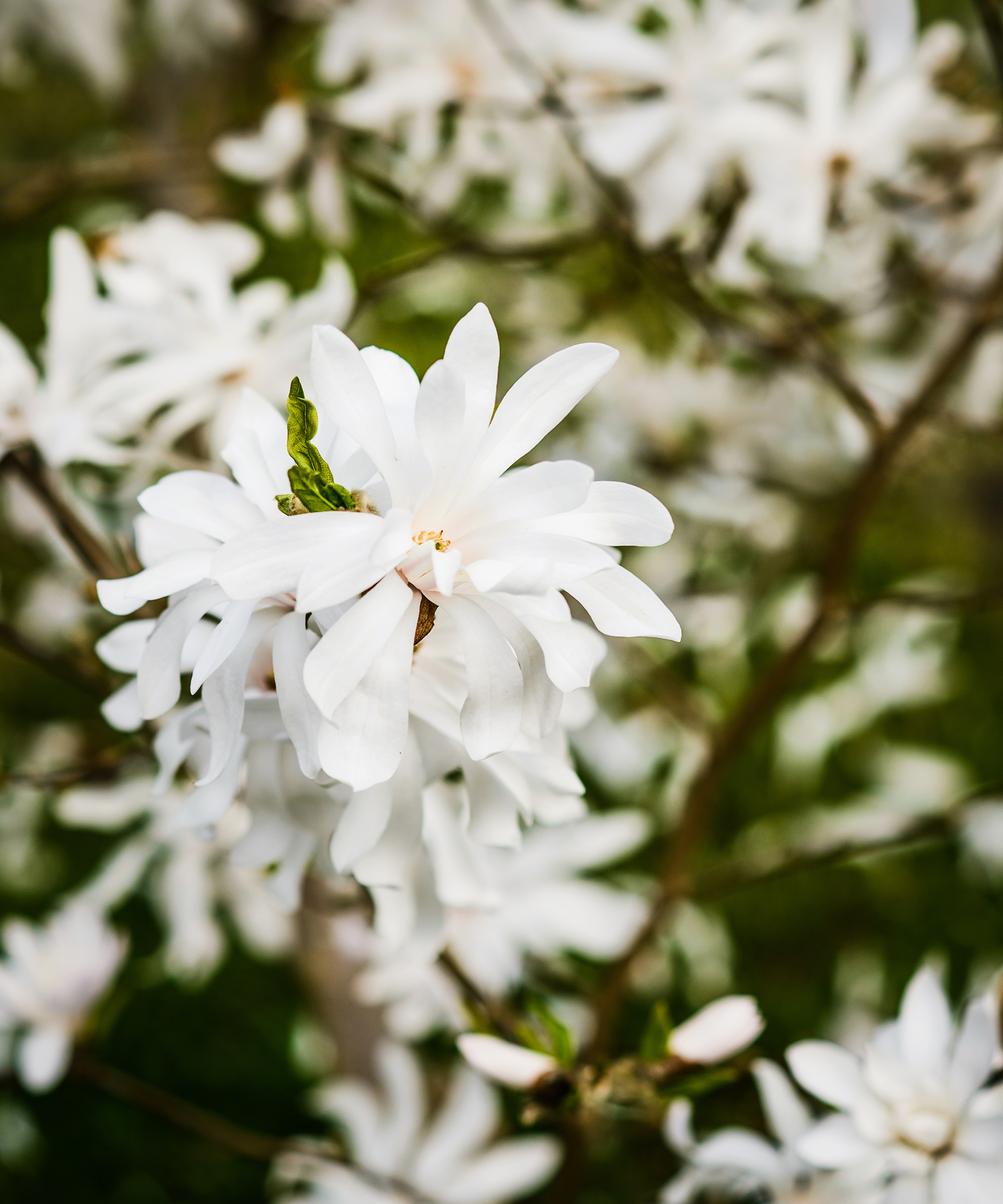
A single specimen planted in a lawn creates a real spectacle, for its starry, goblet or open, scented blooms.
Perfect for small gardens, Magnolia stellata ‘Royal Star’ has white starry flowers and forms a rounded shrub, ideal for pots. For a compact tree at 6ft (1.8m) tall, try M. cyclindrica ‘Lv Xing’, with cup-shaped white flowers and pink veining from the base. Some magnolias can outgrow their allotted space, so always check a tree’s eventual size before buying.
Plant your tree in a sheltered spot, away from cold winds, on a well-drained, fertile acid loam. Like deciduous trees, they establish better if planted in autumn or spring. Mulching annually will retain moisture. US hardiness zones vary, so make sure you check individual varieties.
13. Bergenia (elephant’s ears)
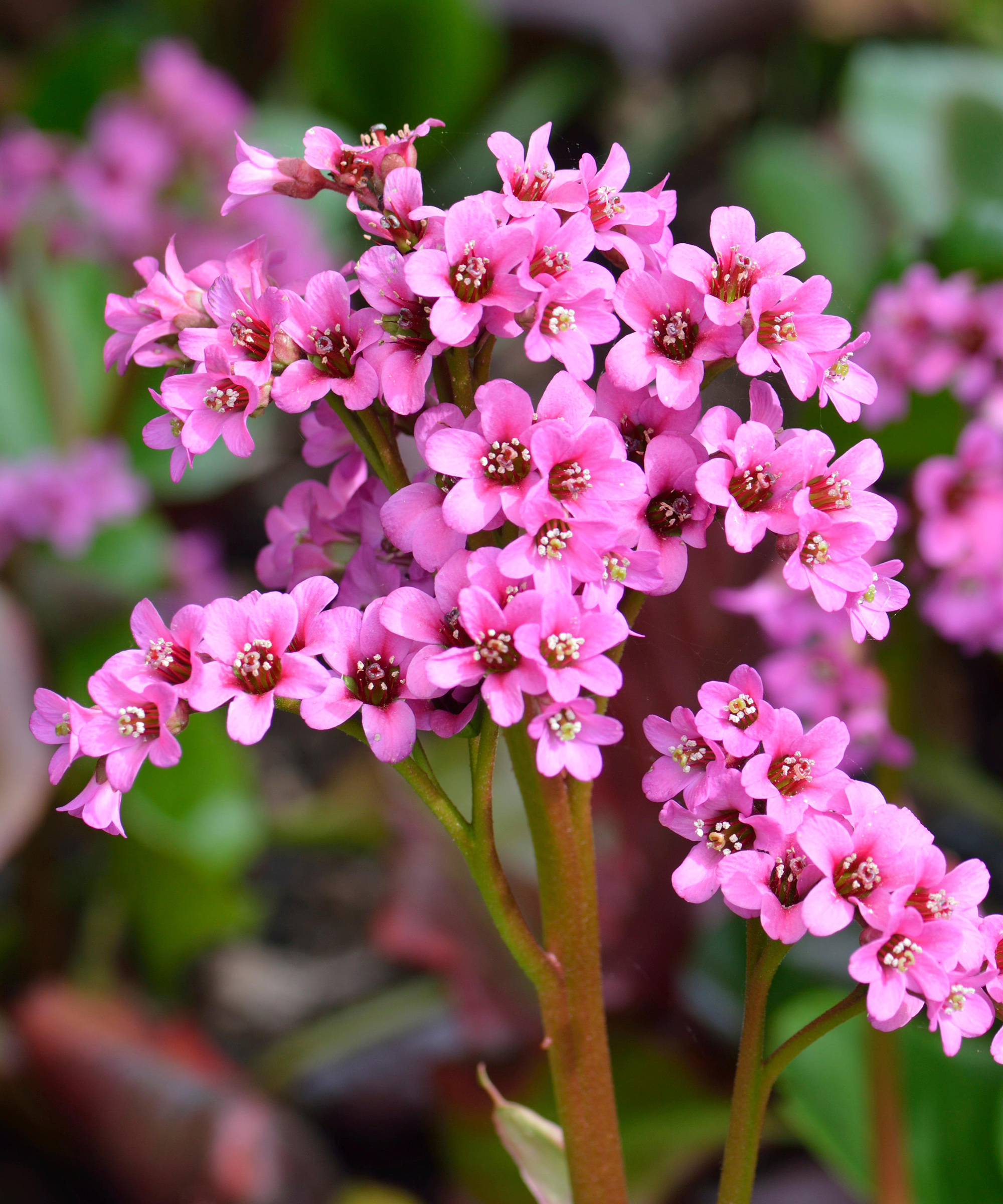
An indispensable ground-covering evergreen perennial, this is great for choking out weeds in borders, banks and beneath trees. Bergenias flower in mid to late spring, bearing numerous stems topped with loose clusters of small flowers in a range of shades from pink to white.
‘Sunningdale’ is a clear pink. Then there's ‘Eroica’ in a bold magenta, and ‘Bressingham White’ in white. These are just a few examples of bergenia, which all are rich in pollen and nectar.
Their rounded, leathery leaves turn mahogany or copper in cold weather. Grow them at the front of borders as a garden edging idea, to complement spiky or upright shapes such as grasses.
Bergenias are amenable plants, happy in poor, well-drained soil in any aspect though brighter conditions produce better winter leaves and flowering. Group in three to five to form a carpet. US zone 3-8, depending on variety.
14. Primula denticulata (drumstick primula)

A delightful spring flowering plant that can be relied upon to brighten up the garden, plus the lollipop shapes add a lovely touch to mixed spring containers, too.
This perennial forms a rosette of long, rounded, toothed leaves, each plant bears several tall stout stems with spherical heads 3in (7cm) across, comprising densely packed small trumpet shaped flowers with a yellow eye. Flowers appear from April into May, usually in lilac, purple, pink, blue, and white.
For best results, grow in a loamy neutral to acid soil that doesn’t dry out, mulch in spring to help trap in moisture. Tidy up plants by cutting back after flowering, but allow heads to ripen and spread seed. Buy plants as bedding varieties or grow flowers from seeds by starting them off under cover in spring. Suitable for US zones 2-8.
15. Clematis armandii

This clematis is special in that it has both evergreen leaves and large, star-shaped white flowers that appear in late spring. When the flowers finish, the leaves create a green wall of shiny, long green leaves, perfect as a summer backdrop to a tropical border.
This species is vigorous enough to climb into a tree so it’s best to train it along support wires to cover a wall or pergola, just keep it in check by trimming after flowering. Look for the pure-white variety ‘Snowdrift’, or pink flushed ‘Apple Blossom’.
Plant in full sun in any soil. Although hardy, C. armandii grows best in a sheltered spot out of cold winds. Don't worry about how to protect plants from frost too much as if frost damage occurs, this plant quickly recovers. Grow in US zones 7-11.
16. Lamprocapnos spectabilis (bleeding hearts)

Once known as Dicentra spectabilis, the name change hasn’t dampened the popularity of this perennial. The pendant flowers are enchanting as they form on long, arching stems from April to June.
Mainly bicolored, look for ‘Gold Heart’ which is pink-white, red-white ‘Valentine’, or ‘Alba’, which is pure white. Attractive to bees and moths, bleeding hearts make gorgeous cut flowers. Sear the base of the stems with hot water before arranging in a vase.
These plants form a mound of attractive divided green leaves, in mid summer they disappear as they go dormant. Often sold as bare roots from fall to early spring, plant them where the flowering stems can be clearly seen. Good companions include brunnera, pulmonaria and hostas.
Happy on any soil, they prefer a cool spot in partial shade. Apply a mulch with organic matter to retain moisture at the roots. US zones 3-9.
17. Fritillaria meleagris (Snake’s head fritillary)

Deservedly popular, the pretty nodding checkered bells on thin slim stems are most effective naturalized in drifts in grass and meadows. Fritillaries will grow in any garden given the right conditions, relishing a cool damp, moist soil in spring.
These delightful spring flowering plants come in various shades of purple, and white, and some mail order companies offer packs of mixed colors.
Plant bulbs to a depth of 3in (7cm), in generous drifts from late summer to fall, incorporating well-rotted compost to help retain moisture. They will flower reliably in April each year requiring no additional care, but to help them establish and set seed allow the foliage to die down before mowing the lawn in June/ July. US zones 4-8.
18. Epimedium (barrenwort)
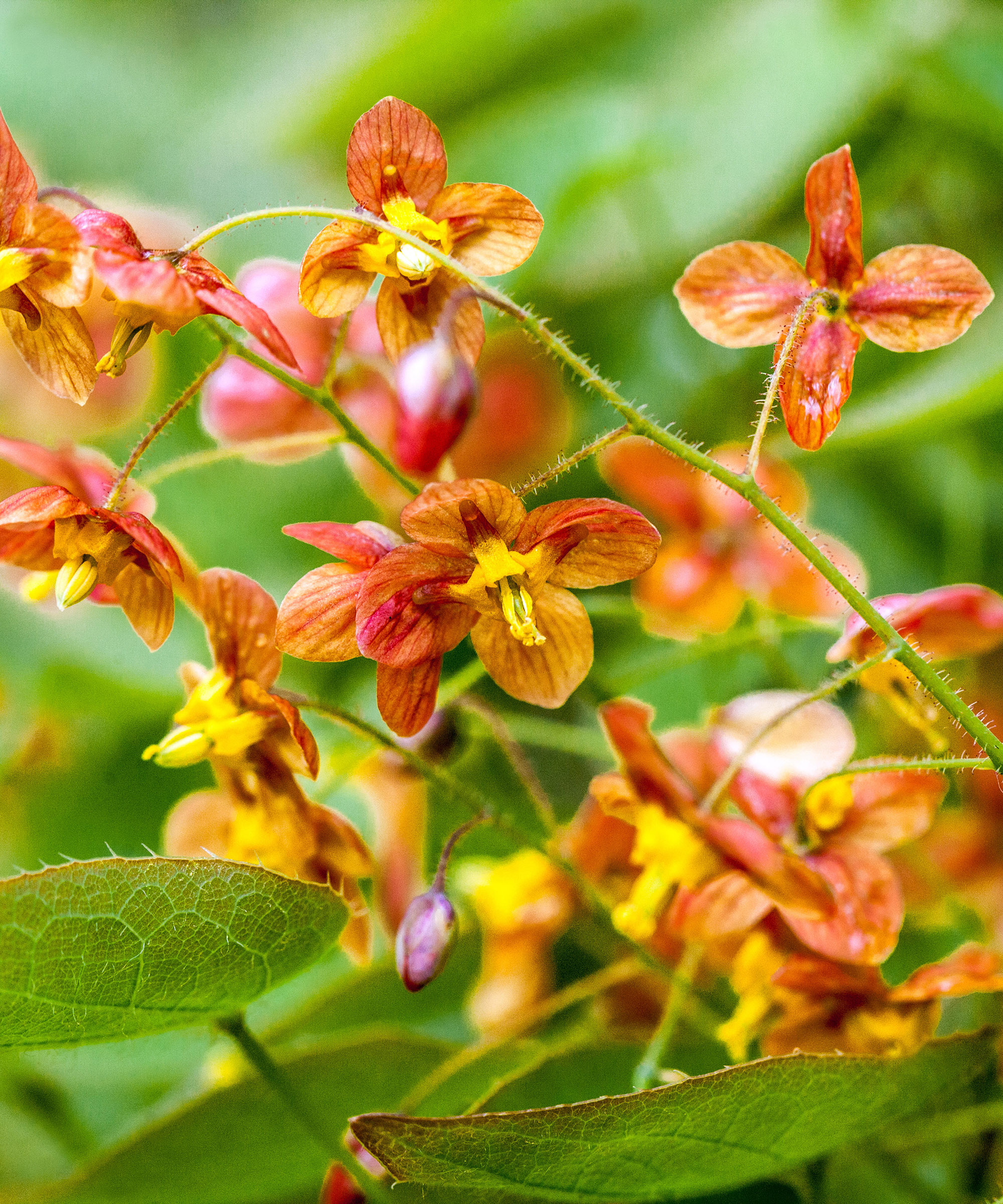
A tough ground-covering deciduous or evergreen perennial, with interesting heart-shaped evergreen or deciduous leaves that change from coppery in spring and reddish in fall. Wiry stems bear dainty sprays of bowl-shaped flowers in yellow, orange, pink or white, for weeks.
Deciduous kinds include bright yellow, E. x warleyense ‘Orangekonigin’. Epimedium versicolour ‘Sulphureum’, is a tough evergreen with yellow flowers that flourishes in dry soil beneath trees.
Combine barronwort with other spring flowering plants such as hellebores, brunnera and wood anemones. Incorporate plenty of organic matter before planting to keep them happy and plants will steadily spread to form a weed-busting carpet. Give them a tidy up as one of your winter garden jobs in late winter. US zone 5-9.
19. Brunnera macrophylla (Siberian bugloss)
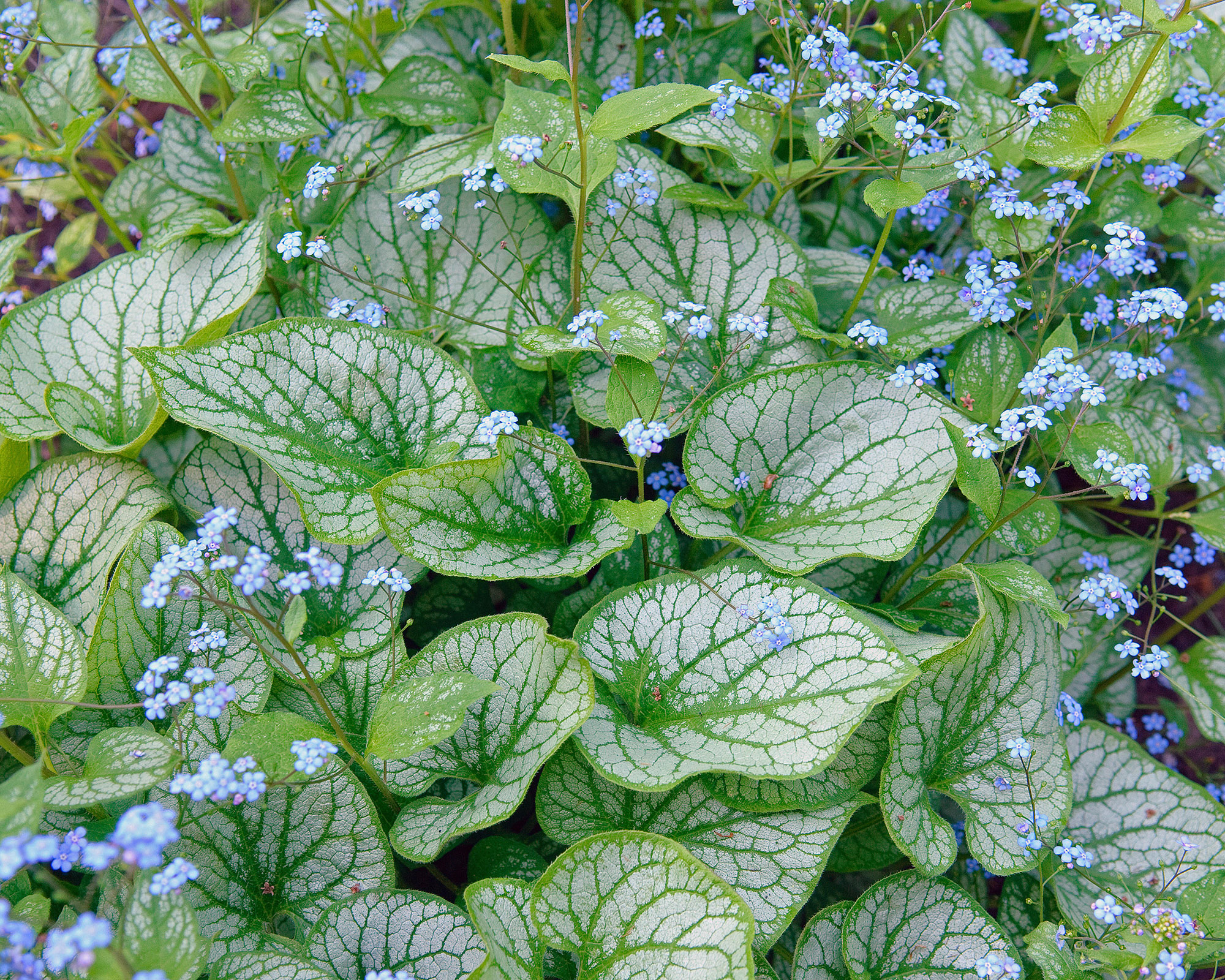
Brunnera is a herbaceous perennial grown for its striking foliage and sprays of delicate blue flowers. Deservedly popular for its steely veined leaves, ‘Jack Frost’ is a must-have for lightening a shady spot, the large heart-shaped leaves are almost entirely silvered with green veins and rim. ‘Alexander’s Great’ has silver marbled green leaves and ‘Diana’s Gold’ has distinct yellow leaves.
Brunnera is happy in dappled shade in any soil, preferring moist but well-drained conditions, and steadily grows to form a clump. Easy to look after, cut back faded flower stems to encourage a second flush. Add plenty of organic matter before planting to help retain moisture. US zone 3-7.
20. Anemone blanda
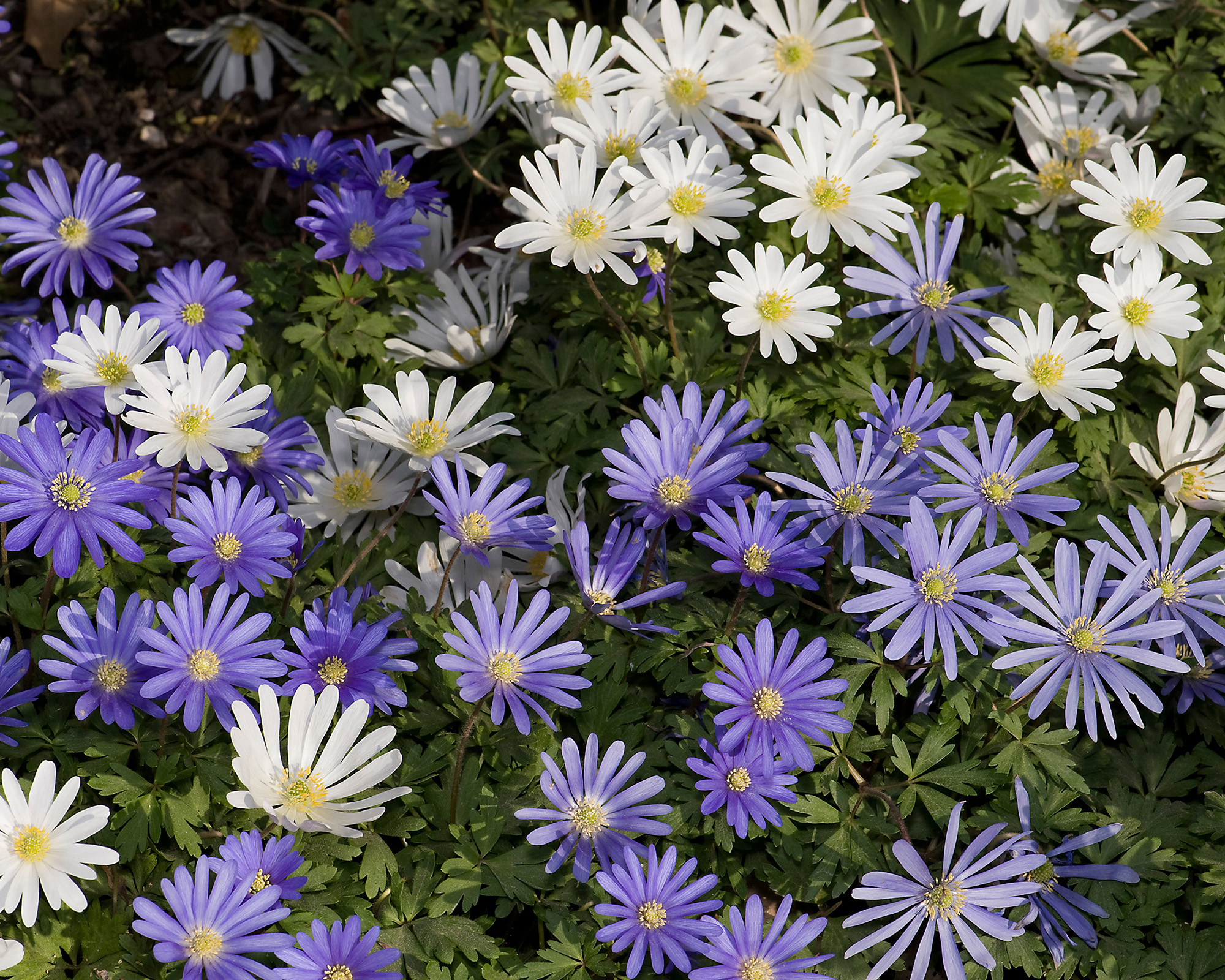
Drifts of these dainty herbaceous perennials carpeting woods and shady gardens is a special sight. They come in a good range of colors, from blue, purple, pink and white and are a good option for plants under trees.
Soak the corms before planting in autumn, to a depth of 1-1.5in (3-4cm) deep. You can also buy pot-ready plants to plunge into container displays in spring.
Not to be left out, Anemone nemorosa (wood anemone) is a charming relative, the star-shaped white, pink or blue blooms have distinct yellow anthers and appear on long stalks above deeply lobed leaves. Enjoy this native wildflower in your garden in moist, humus-rich soil, and they will gently colonize in time via underground rhizomes. Soak the roots overnight and plant into humus rich soil, 2-3in (5-8cm) deep.
If you want to learn how to grow a wildflower meadow, you can try combining these with other wildflower seeds for a pretty effect. Suitable for US zones 5-8.
21. Viburnum x bodnantense (arrowood)
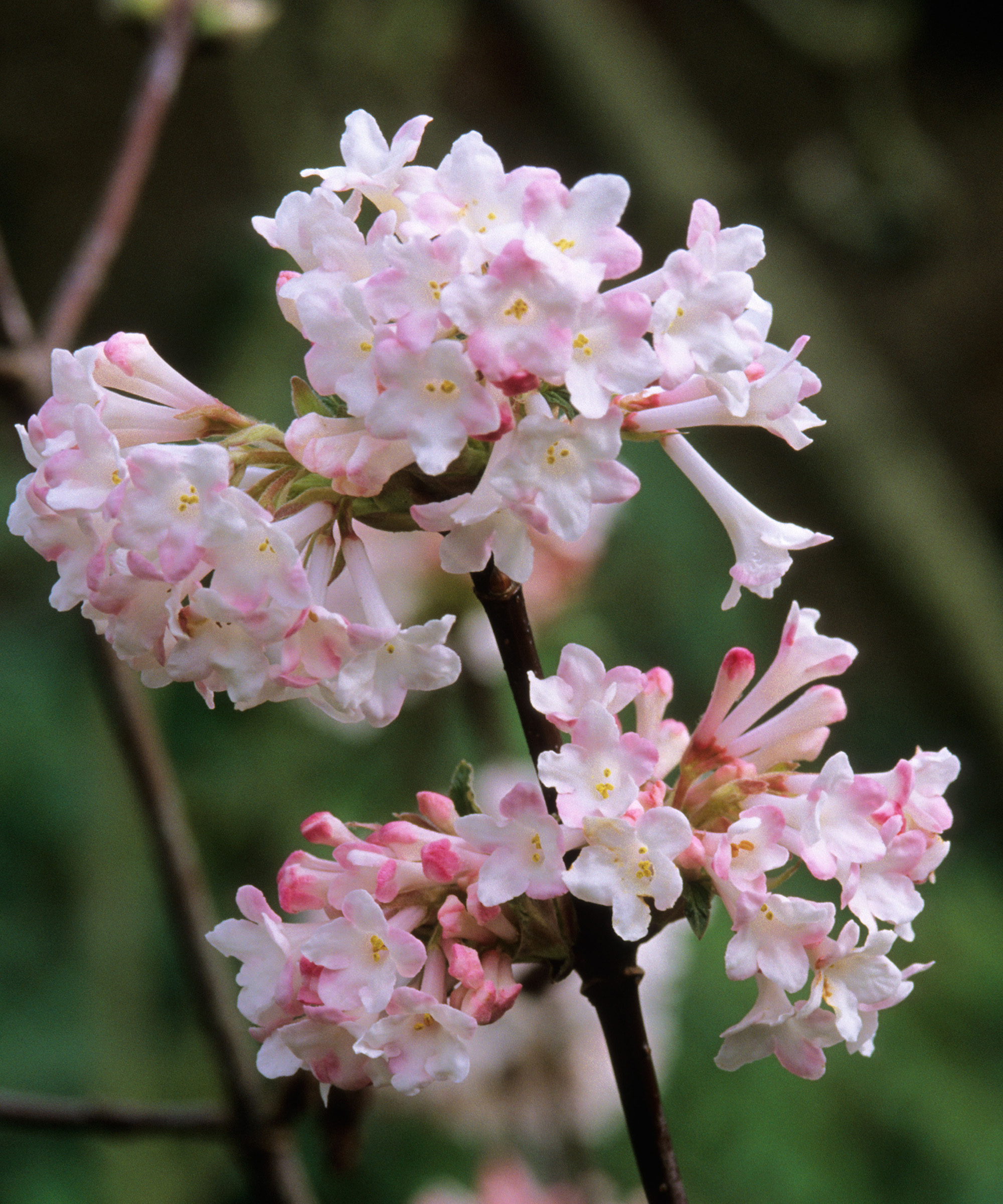
Flowering shrubs that perform from winter right through to spring are invaluable, particularly when highly perfumed. This is one such reliable plant, with several types of viburnum to choose from, including ‘Deben’ with apple blossom pink buds that open to white.
‘Charles Lamont’ has bright pink buds and blooms, and finally, the sought after, ‘Dawn’, which has red buds that open flushed pink. The clusters of small tubular blooms hang from bare stems before young bronze foliage appears, turning dark green in summer and rich tones in autumn.
If you're keen to learn how to grow viburnum, it's perfect for a mixed border. Partner it with camellias, hellebores and crocus. A little pruning is required, thin out by trimming the oldest branches in late spring to encourage new flowering wood. Grow in any soil, in sun or partial shade. US zones 5-7.
22. Helleborus x hybridus (Lenten rose)
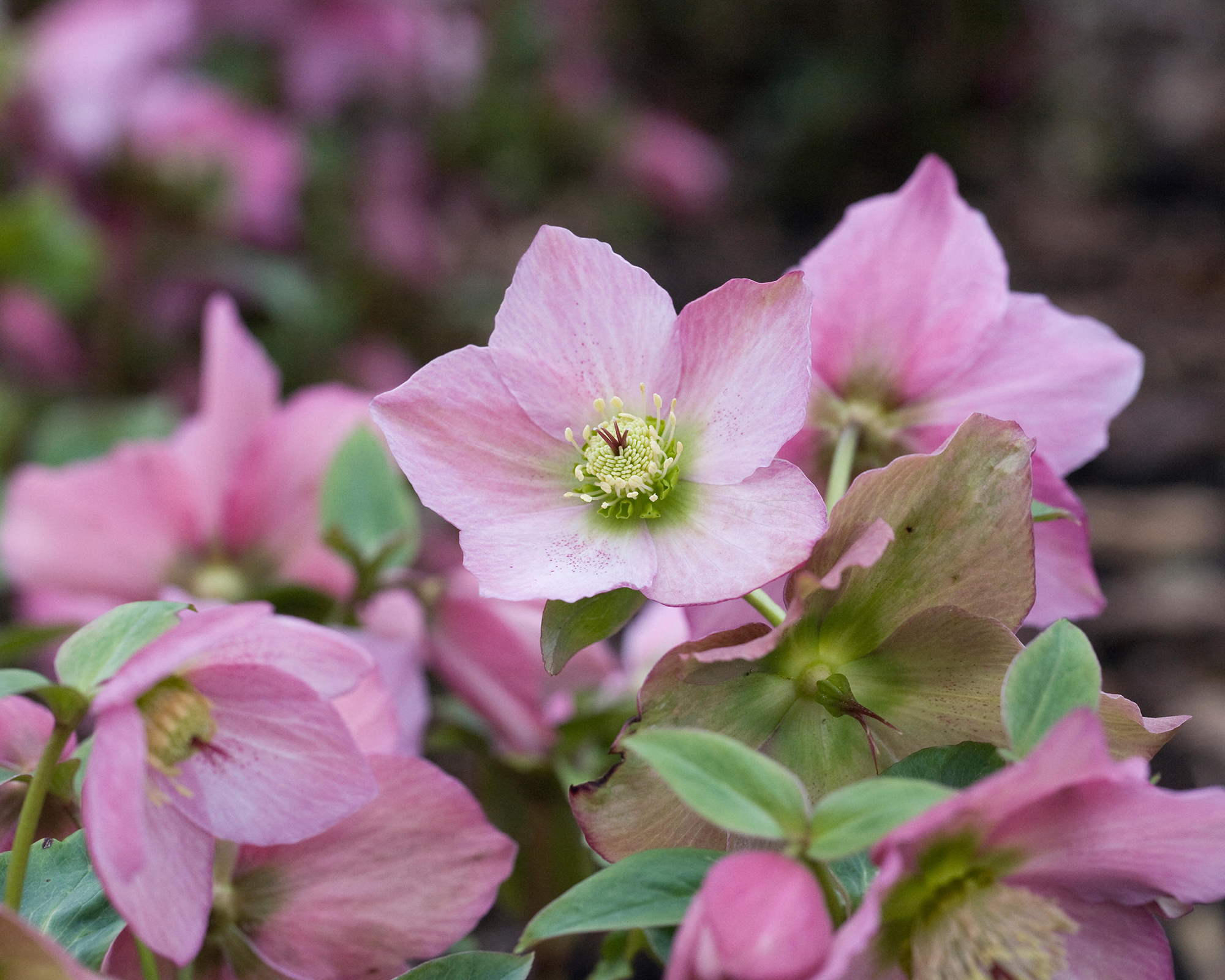
Blooming for weeks, the saucer-shaped single or double blooms are bee-friendly, and come in many colors. From white to pinks through to burgundy and black, some petals are attractively marked with veins or spots or have colorful nectaries.
Hybridising continues to provide exciting new forms, look for Harvington cultivars that come in different shapes and colors, while the Evolution group have outward-facing blooms on strong stems. ‘Walberton’s Rosemary’ (Walhero) is a cross between H. niger and H x hybridus that bears masses of flowers from winter to spring.
These hardy perennials are one of the top shade loving plants, and are tolerant of most soils but do best on deep, fertile well-drained ground where roots will have a cool, moist run. Add well-rotted manure to the planting hole and mulch after planting. Trim off the old leaves in December. US zones 3-8.
23. Acacia dealbata (mimosa, blue wattle)
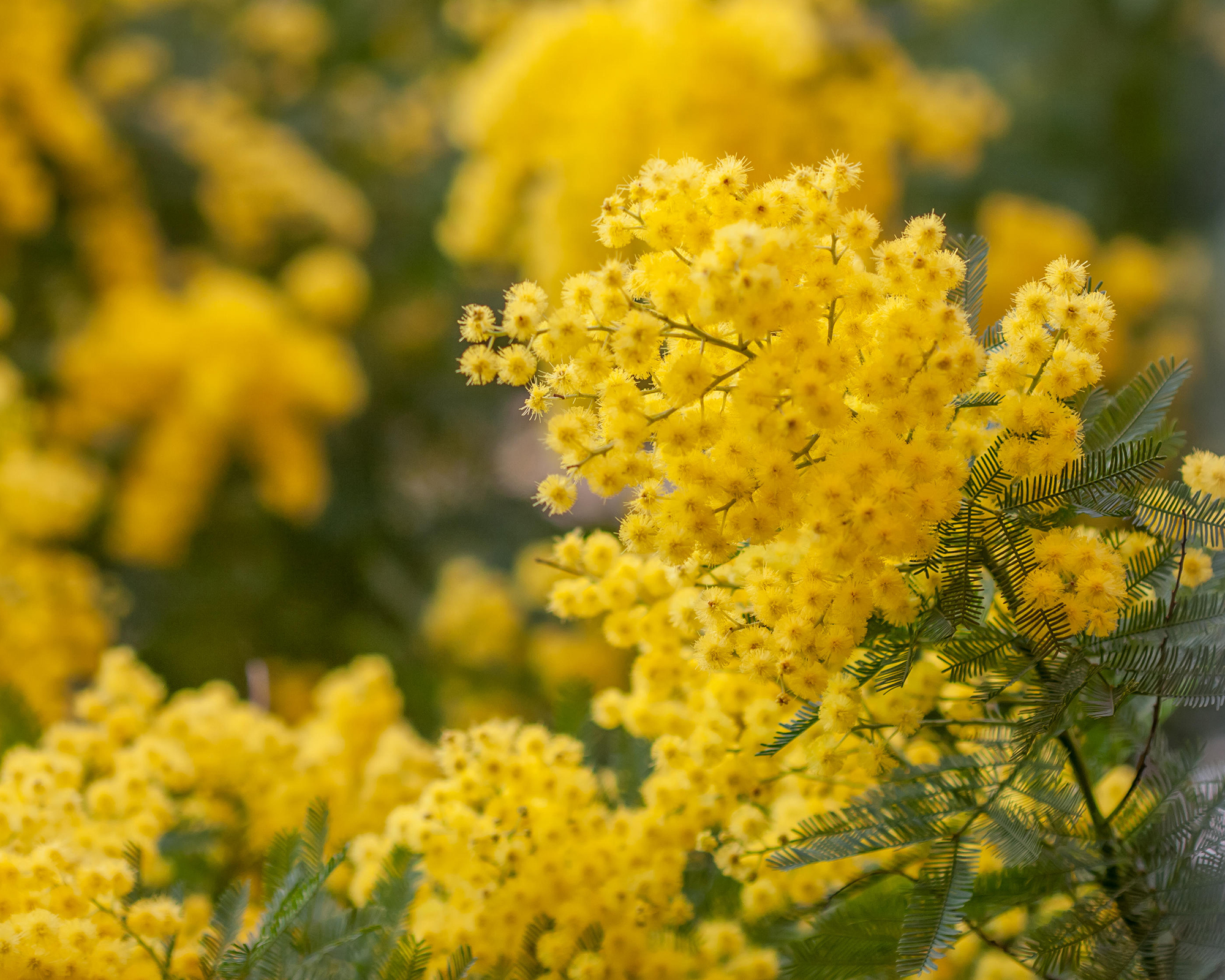
Native to Tasmania, Australia, this evergreen shrub or tree is a showstopper in flower. Glorious plumes of bright yellow, fragrant tiny pom-pom appear for a long period from January to April.
One of the top spring flowering plants for mild coastal regions or urban and city courtyard gardens, it does well when given a sunny, sheltered spot. In colder areas, small plants can be grown in a container and moved to a covered area or conservatory for the winter.
Both the feathery leaves and flowers of mimosa are popular with flower arrangers. If damage occurs due to a prolonged spell of cold weather, plants will regenerate if cut back into undamaged wood, or will naturally sprout from the base.
Mimosa prefers free-draining, neutral to acid soil. If planting in a container, use a loamy or ericaceous compost and water during drought. Suitable for US zones 9-11.
24. Paeonia lactiflora (herbaceous peony)
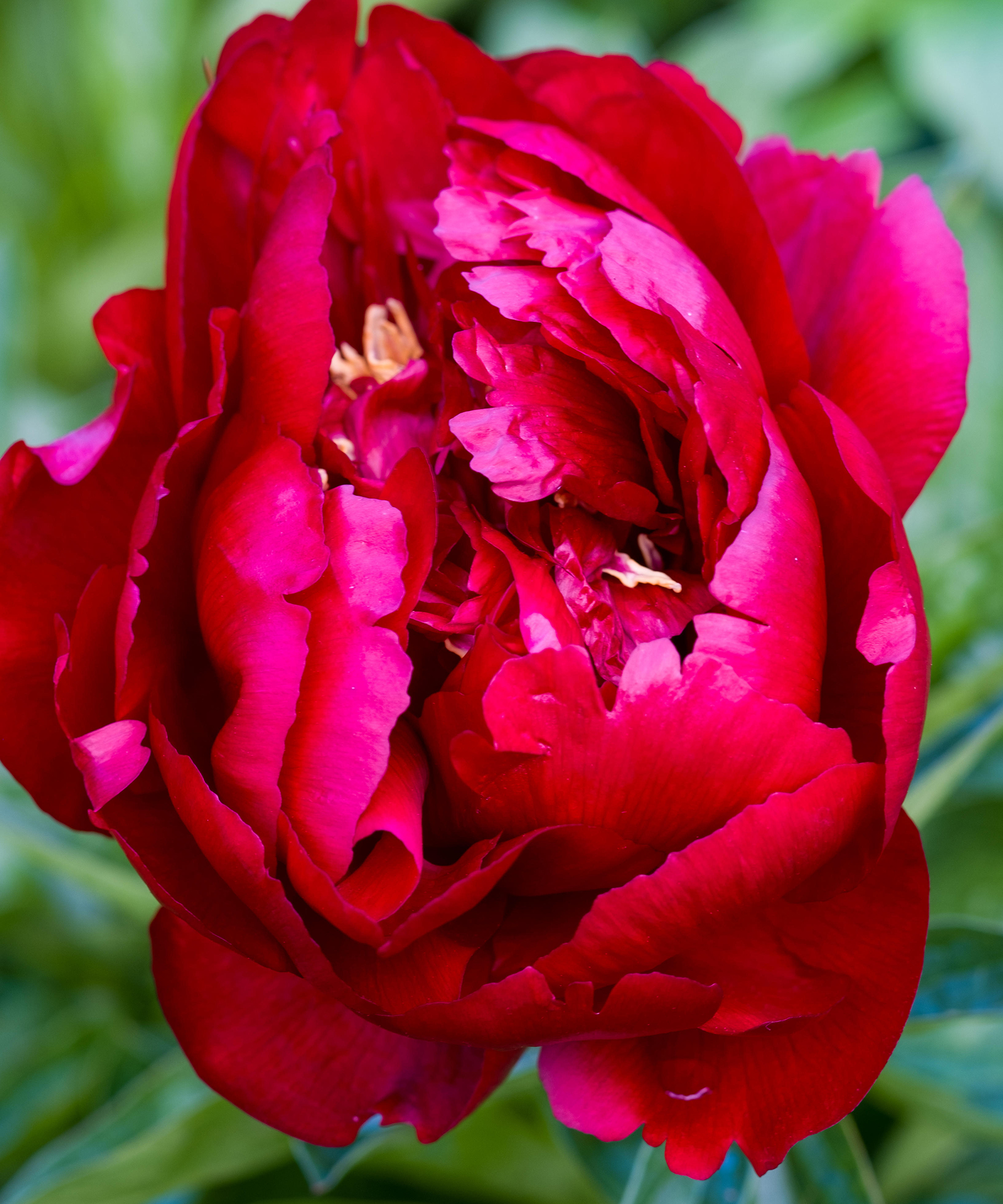
The showstopper amongst perennials, there’s a vast array of colors and shapes to choose from. The double peonies provide the ‘wow’ factor, and the singles and semi-doubles are good for pollinating insects and are fantastic as cut flowers.
The early season peonies to look out for include ‘Clare de Lune’, single, ‘Buckeye’ Belle’, and ‘Pink Hawaiian Coral’ a scented pink semi-double with emerging red foliage which complements other spring flowers nicely.
Deadheading flowers as they go over will keep the show going for longer. Hardy and long-lived, peony crowns are best planted in autumn, but available in containers at other times.
Avoid planting too deeply, as this is the most common reason for non flowering. As a guide, the crown should be covered by 2-3in (5-7cm) of soil. Choose a sunny open spot in moist, well-drained soil, away from vigorous neighbouring plants. US zones 3-8.
25. Aquilegia (columbine)
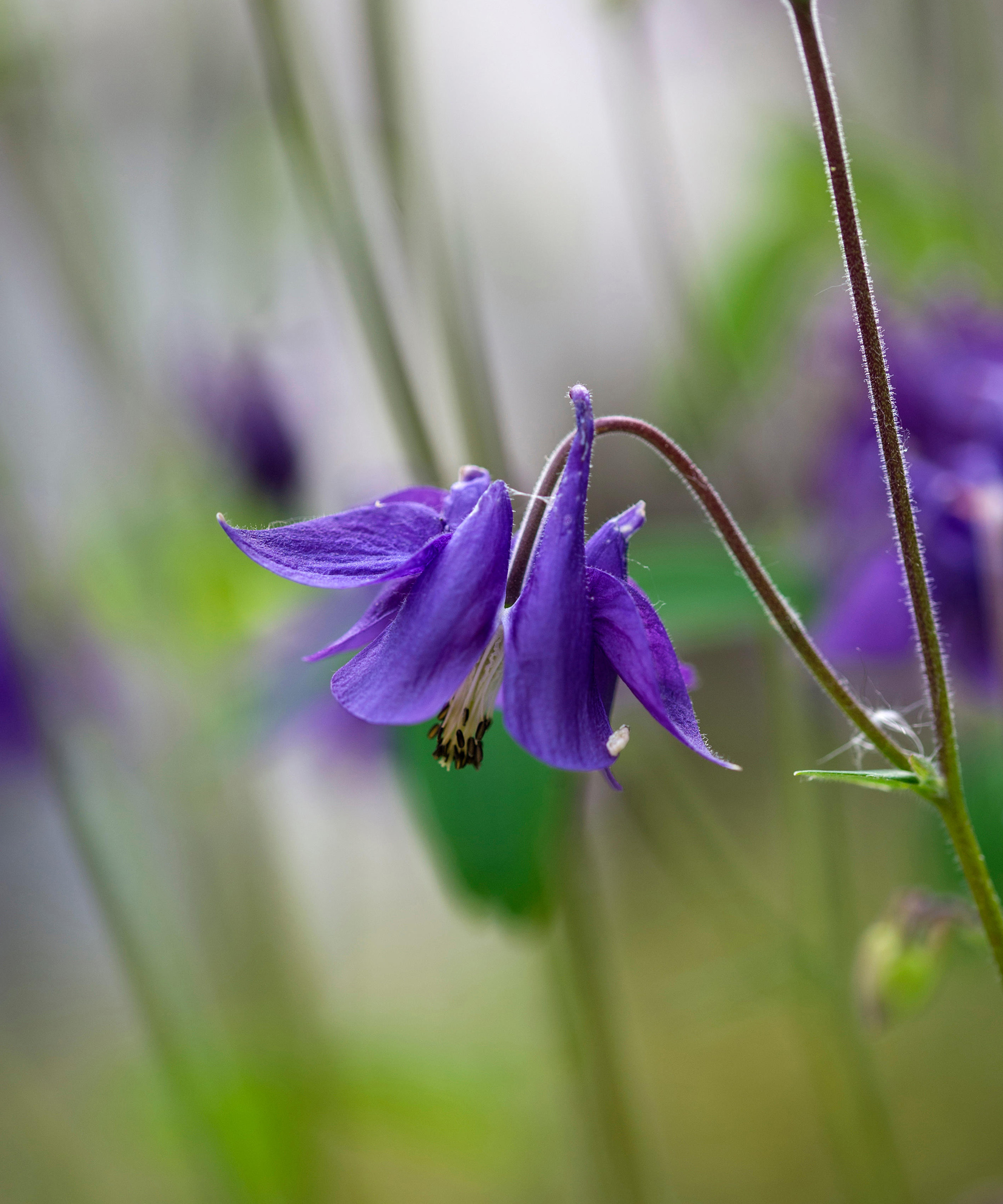
Widely considered one of the best cottage garden plants, aquilegias will grow in tricky places and make useful gap fillers in mixed borders from late spring. Found as singles or doubles, with or without spurs, on long stems above clumps of attractive blue-green leaves.
A couple to try are A. chrysantha ‘Yellow Queen’, which is yellow with striking looking spurs. A. ‘Munstead White’, is a lovely pure white with short spurs ideal for lightening a shady spot. The common A. vulgaris, comes in pink, purple, burgundy and white, this one self-seeds readily so deadhead often.
Plant these easy hardy perennials into well-drained soil. After flowering, simply cut all the stems back hardy to the base where new growth will appear. US zones 3-9.
What spring flowers bloom the longest?
For the longest display of spring flowers, select perennials and shrubs with a prolonged flowering period, such as Euphorbia characias and E. polychroma, viburnums, Camellia x williamsii hybrids, pulmonarias, brunnera and hellebores.
Bedding violas, pansies, primroses, wallflowers and Bellis perennis play an equally important role, just make sure they are regularly deadheaded to keep the flowers coming.
It is easy to extend the bulb season by choosing early, mid and late season varieties of tulip and narcissus, for flowers from February to May.

When should I buy spring flowers?
Spring and fall are the best time to buy and plant the best spring flowering plants. This is the time to introduce new perennials and evergreen shrubs, when soil is moist and workable.
Deciduous spring-flowering trees such as ornamental cherries can be planted any time from October to March, and are usually available as bare-root trees that are considerably cheaper to buy than containerised plants.
If you didn’t get round to planting dormant spring bulbs in autumn, there are plenty of other options available so you can plant a last minute spring container. You can choose from a wide range available as ready-grown plants in pots from the garden centre. These can be displayed indoors, or removed from their pots and plunged into containers with cheery hardy bedding plants for an instant show. You will find an excellent choice of hardy violas, pansies, primulas for sale, but remember to try and buy plants with plenty of new buds.
Wendy’s love of gardening began when she was just six having been her own patch in her parents’ garden. Horticulturally trained with Royal Horticultural Society qualifications, her passion for plants and gardening grew, leading to a long and rewarding career working for several monthly and weekly gardening magazines, including Amateur Gardening.
She enjoys visiting gardens for inspiration and has a keen interest in garden and wildlife photography. Since finding a secondhand greenhouse on a pre-loved site, she enjoys propagating new plants - but the real challenge is shoe-horning them all into her front garden and courtyard in Dorset.

